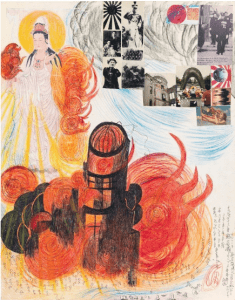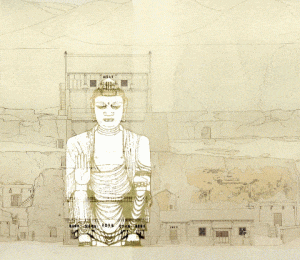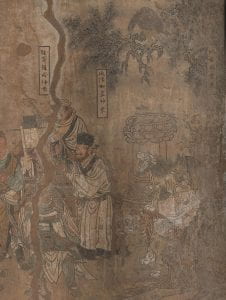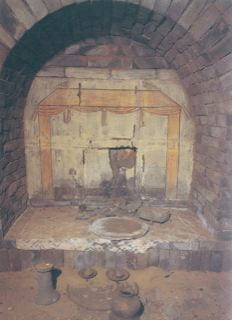Aurelia Campbell (Associate Professor, Art, Art History, and Film Faculty, Boston College)
“Tibetan Stupa as Protective Force in Early Ming Burials”
Discussant: Wei-Cheng Lin (Associate Professor of Art History and the College, Department of Art History)
Wednesday, Oct 7
4:45-6:45 pm, Zoom meeting (please find the registration link below)
Abstract
This paper focuses on an unusual early Ming dynasty (1368-1644) brick tomb in Mayishan, Wangcheng County, Hunan. The tomb belongs to a woman named Zhang Miaoshou, who served as the wet nurse of Prince Gu, nineteenth son of the Ming founder, Zhu Yuanzhang. Among the numerous Buddhist artifacts unearthed from the tomb, the most intriguing is a large stone reliquary in the shape of a Tibetan-style stupa, which holds dozens of Buddhist and Daoist scriptures. What was it doing there? By connecting the stupa to a host of earlier material evidence incorporating the written word, this paper argues that the stupa and its contents ultimately served apotropaic and salvific functions. It furthermore makes a case for the significance of the Tibetan-style stupa as a symbol of protection in the post-Mongol world.
Zoom Registration Link:
https://uchicago.zoom.us/meeting/register/tJErc-muqTgpE9BK_PMqYLqqL9mZweUs7VyH
++++++++++++++++++++++++++++
Aurelia Campbell is Associate Professor in the Department of Art, Art History, and Film at Boston College. Her research centers on the architecture and material culture of the Yuan (1279-1368), Ming (1368-1644), and Qing (1644-1911) periods in China. Campbell’s first book, What the Emperor Built: Architecture and Empire in the Early Ming (University of Washington Press, 2020) examines the construction projects of the famous Yongle emperor to consider how imperial ideology is given form in built space. Addressing how and why his buildings were constructed, the book expands our understanding of “imperial Chinese architecture” as a building typology. Her second book, in progress, explores the relationship between Buddhism and mortuary culture in the Ming and Qing periods. The book will consider Buddhist funerary art and architecture from a large swath of society—including emperors, empresses, princes, eunuchs, monks, and aristocrats—to better understand how conceptions of the afterlife differed according to one’s position in life. The book aims to fill a gap in scholarship on Chinese tombs after the Yuan dynasty. Her research has been supported through grants and fellowships from Millard Meiss Publication Fund, James Geiss Foundation, Max Planck Institute for the History of Science, Asian Cultural Council, and Metropolitan Center for Far Eastern Art Studies, among others.
Wei-Cheng Lin is Associate Professor in the Department of Art History at the University of Chicago. Lin specializes in the history of Chinese art and architecture, with a focus on medieval period, and has published on both Buddhist and funeral art and architecture of medieval China. His first book, Building a Sacred Mountain: Buddhist Architecture of China’s Mount Wutai, was published in 2014 with the University of Washington Press. He has also written on topics related to traditional architecture in modern China. Lin is currently working on two book projects: Performative Architecture of China, explores architecture’s performative potential through history and the meanings enacted through such architectural performance. Necessarily Incomplete: Fragments of Chinese Artifacts investigate fragments of Chinese artifacts, as well as the cultural practices they solicited and engaged, to locate their agentic power in generating the multivalent significance of those artifacts, otherwise undetectable or overlooked.








